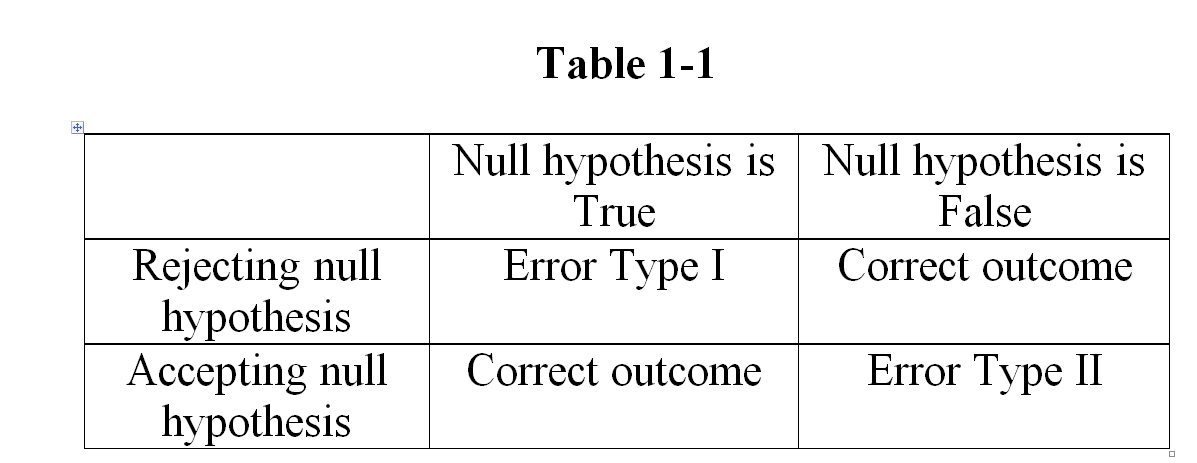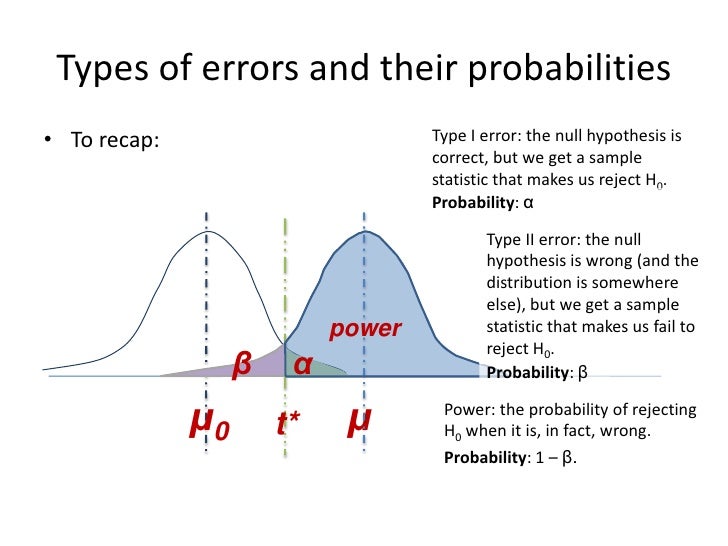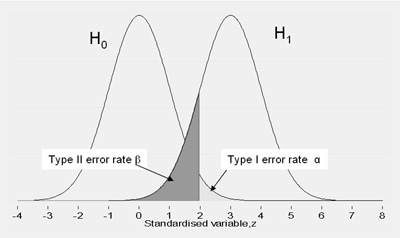Type I and type II errors#Type I error
The type 1 error or α error ( alpha error ) is a term used in statistics. It refers to a special method of mathematical statistics, the so-called hypothesis testing. When testing a hypothesis is a type 1 error before, if the null hypothesis is rejected although it is true in reality (based on false positive results ).
The initial hypothesis ( null hypothesis ) here is the assumption that the test situation located in the " normal" state. So it can not, even though he is actually present this "normal state", it is a mistake 1st Art examples of a type 1 error are
- The patient is considered to be sick, though he is healthy in reality ( null hypothesis: the patient is healthy),
- The defendant is sentenced as guilty, even though he is in fact innocent ( null hypothesis: the defendant is innocent )
- The person is granted access, even though it has an access authorization ( null hypothesis: the person has access permissions)
The fixed before a test or an examination probability such a type 1 error to commit at a decision, also called the significance level or probability of error. Typically, one chooses a significance level of 5 % ( significant) or 1 % (very significant).
The other possible wrong decision, namely to reject the alternative hypothesis, although it is true, is called error 2 Article
Decision table
Examples
- A tester has an urn in front of him, in which he can not look into it. In it are red and green balls. Time can be taken for testing from the urn only one ball.
- We want to check if a new learning method improves the learning performance of students. For this, we compare a group of students who were taught according to the new method of learning, with a sample of students who were taught using the old method.
- Spam filter for incoming e -mails: a filter is to detect whether an incoming email is spam or not.
Note: alpha ( and beta ) are conditional probabilities.









